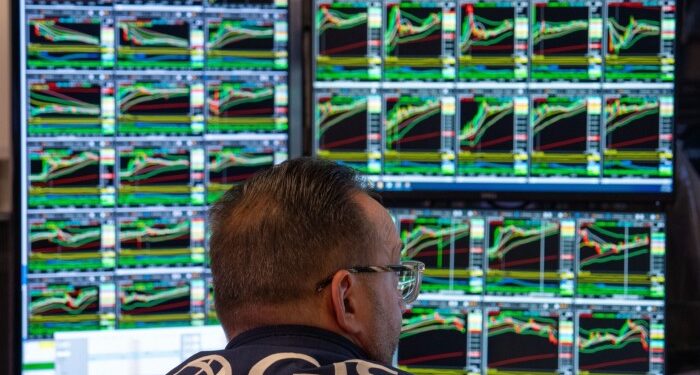Unlock the Editor’s Digest for free
Roula Khalaf, Editor of the FT, selects her favourite stories in this weekly newsletter.
The writer is an FT contributing editor
The current sell-off in the tech sector triggered by the progress of Chinese artificial intelligence start-up DeepSeek is a reminder of the risks of a concentrated stock market. The largest 10 stocks account for almost two-fifths of the S&P 500. Such concentration is unprecedented in modern times. Increasingly, equally weighted index products, which invest the same amount of money in every stock in a benchmark, are being touted as a way to dodge the risks of an ever more concentrated portfolio. Should investors heed these calls?
More concentrated stock markets make for less diversified passive portfolios. But this need not be a problem for either returns or even risk-adjusted returns. Having a third of your portfolio in a handful of stocks that compound high double-digit returns has been fabulous for passive investors in recent years, if less so for those active managers that underweighted Big Tech.
And there are good reasons why the largest companies are so highly valued. Today’s superstar corporates capture global economies of scale. They manufacture and control valuable intellectual property and have demonstrated the ability to commercialise it. Their earnings have been fast growing and persistently so. Market prices tell us that investors believe this trend can be sustained.
But the most valuable companies of today are rarely the most valuable ones 10 years hence. Research by Bridgewater Associates last year examined the performance of the most prized US businesses going back to 1900. By assembling a new cohort at the start of each decade and tracking their relative performances, the authors found that a market-weighted basket of the largest 10 stocks underperformed the market by an average 22 per cent over the next decade. Run the clock three decades forward and this underperformance extended to 53 per cent.
Such dynamism is healthy. Superstar tech companies of yesteryear such as Eastman Kodak, Xerox and Lucent have been supplanted by today’s Apple, Amazon and Alphabet. Some combination of spirited competition on the part of the market and effective antitrust machinery is key to economic growth.
It is possible that today’s megacaps will be more successful than their forebears in either reinventing and disrupting themselves to stave off challengers, or in stifling competition and capturing government. But to believe so is to believe that this time will be different. And for long-term investors pondering equal-weighted index products, this is the big call. Reversion to a less concentrated market requires underperformance on the part of the largest companies. It is this that would be likely to propel outperformance by equally weighted index trackers.
No one can know whether the megacap tech titans of today will sustain, or perhaps even grow, their market presence. A year ago, the elastic band seemed stretched. Since then, the so-called Magnificent Seven have delivered an average return of more than 60 per cent in 2024. There is certainly no foolproof quantitative model that will foretell the future. And so, like much of investing, it comes down to a judgment call.
Goldman Sachs published its call in October. In its judgment, today’s index concentration will unwind, and the impact this has on the long-term return estimates is profound. The bank’s forecast team, led by David Kostin, estimates that the S&P 500 will return only 3 per cent a year over the next 10 years. With no change in index concentration, their call would have been a return of 7 per cent a year. As such, their baseline expectation is for stocks to underperform US Treasuries — a historical rarity.
One of the attractions of passive investing on a market cap-weighted basis is that it offers a free ride on markets that have been made efficient through the analytical toils of active investors. Passive investors do not need to take a view on the prospects of any individual company. To invest in an equally weighted index fund, by contrast, is to implicitly reject the notion that the stock market is efficient.
Equal-weight index products are a way to take exposure to American stocks without betting that this time will be different. They offer investors diversification, but run the risk of missing out if the Magnificent Seven continue their upward march. As the late Charlie Munger once observed, “diversification is for the know-nothing investor”. His point was not that diversification was stupid, but rather that it diluted any insights that professional investors might have. Theory dictates that Munger’s know-nothing investor would be best served by market cap-weighted index investing. For those wishing to capitalise on a view that today’s extreme concentration will revert to mean, equally weighted index products may prove more attractive.







